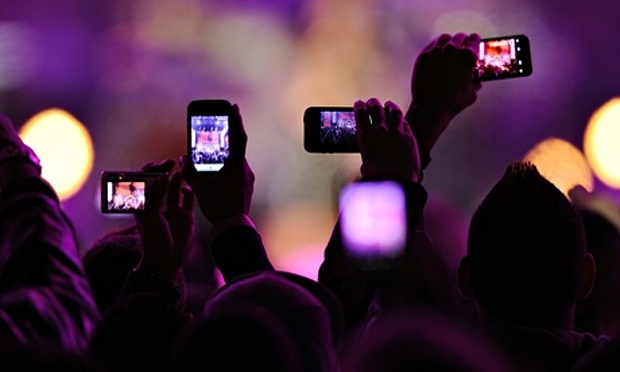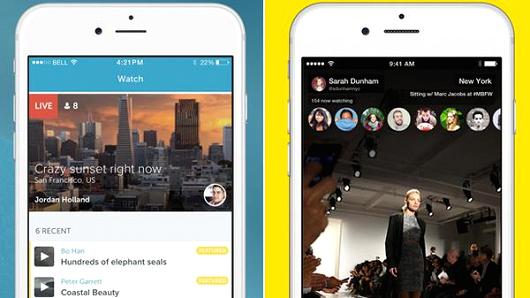Live video streaming isn’t a new concept; what is new is the availability of technology that make streaming more accessible to everyone.
It’s no longer necessary to invest in expensive hardware and software that only the biggest brands could afford. Smaller businesses and consumers have been getting involved since early last year, and it’s expected that video streaming is going to explode in 2016.
Background on Video Streaming
Without getting overly technical, video streaming is content sent online in compressed format, in real time to the end viewer. The user doesn’t have to wait for the entire file to download, but rather view the content in “packets” in a continuous stream; the video is uncompressed and displayed as it arrives to a compatible player. The live context of 
The earliest live video streaming events occurred in the mid-1990’s and were one-time events as opposed to continuous streaming from a location; most notably, a 1995 Major League Baseball game was streamed over the internet for the playoffs.
These days, live streaming video has become a key marketing and communications tool that helps brands reach their online audience – among other uses. And they don’t need to put up a significant investment to do so, as there’s an array of inexpensive and free applications available.
Some Video Streaming Apps to Check Out
- Periscope: Twitter’s live streaming app has been hugely popular since its launch in March 2015, as brands began seeing the opportunities to engage and interact with their target audience via a timely, relevant channel. Periscope allows users to catch a live stream of an event, and even view it up to 24 hours after it takes place. Companies can use it to connect with their communities by providing real-time access to the events that matter most to them.
FaceBook Live: The social media platform followed Twitter’s lead by releasing Facebook Live in August 2015; the premise is the same, however, the app is only available to public figures with a verified page – through the Mentions feature. The celebrity starts a live broadcast that’s posted to the Newsfeed for followers and her or she can view comments as they’re posted. Then, a recording of the content can be made available permanently.
- Snapchat: This video-messaging application allows users to capture photos and videos, then add graphics and text before sending to a list of designated recipients. The twist is that content is only viewable for a handful of seconds, so Snapchat’s not a live streaming app per se; however, it’s still a very effective tool for brands wanting to connect with online communities.
- Meerkat: Specifically intended for iPhone users, Meerkat is a user friendly live video streaming app that links with Twitter accounts. The user-presenter streams a live video of whatever their phone is capturing and posts it to the Twitter feed.
- YouTube: Even YouTube has released its own form of a live video streaming application with YouTube Live Events. Users capture live video of whatever they’re viewing and present it to their audience of followers.
- Blab- check out some bleeding-edge video chat action is happening on an little known website called Blab.im, where four people can video chat simultaneously as an audience watches, comments and can instantly switch places with one of the four video chatters.
One Brand Using Video Streaming: Fashion Brand Marc Jacobs
Marc Jacobs recently incorporated live video streaming via Periscope to launch the brand’s Pre-Summer 2016 clothing launch, giving the media and consumers an exclusive look at the upcoming line. Not only did the audience get a glimpse at the next year’s fashion trends, but were also able to participate in Q&A sessions with designers – further increasing levels of engagement. Followers also gained insight into the styles, fabrics and textures and inspiration behind the launch.
How We’re Using Streaming
Consumers and brands are on both ends of the video streaming spectrum, both creating feeds and viewing them. And we’re going it for a variety of reasons – to view events we can’t attend and to connect with loved ones far away. Companies are using the technology in their marketing efforts to live-stream the conventions, presentations and conferences that we want to see. They’re even using live streaming to reach their own team members spread out across the globe.
Are you using live video streaming to connect with your online audience? I’d love to hear what you have planned for use of media streaming in 2016. Leave a comment or tweet me at @bryankramer.

 FaceBook Live: The social media platform followed Twitter’s lead by releasing Facebook Live in August 2015; the premise is the same, however, the app is only available to public figures with a verified page – through the Mentions feature. The celebrity starts a live broadcast that’s posted to the Newsfeed for followers and her or she can view comments as they’re posted. Then, a recording of the content can be made available permanently.
FaceBook Live: The social media platform followed Twitter’s lead by releasing Facebook Live in August 2015; the premise is the same, however, the app is only available to public figures with a verified page – through the Mentions feature. The celebrity starts a live broadcast that’s posted to the Newsfeed for followers and her or she can view comments as they’re posted. Then, a recording of the content can be made available permanently.



